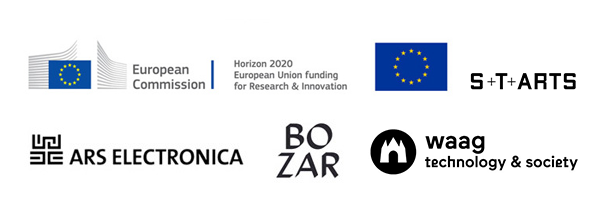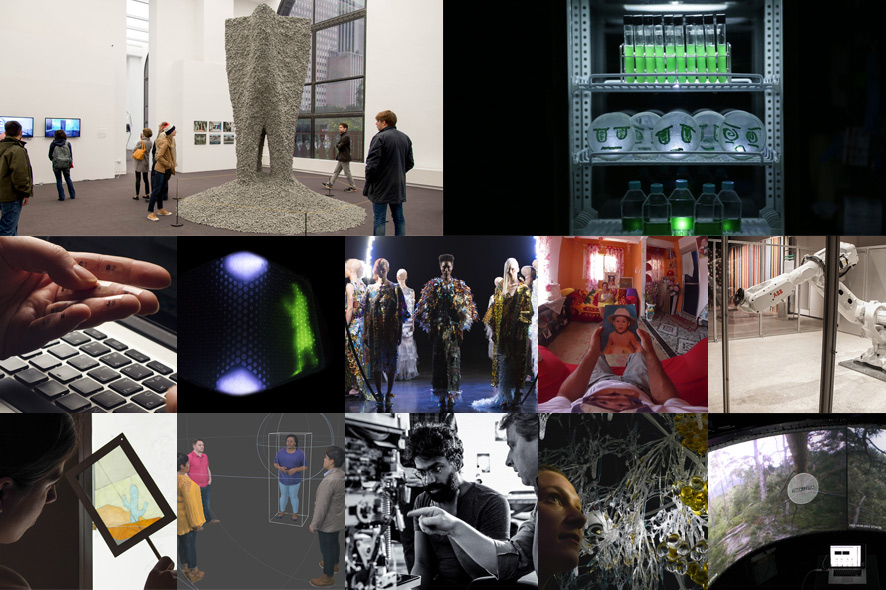Timely, innovative projects at the nexus of science, technology and art will be on display for Ars Electronica festivalgoers in the STARTS Prize exhibition running September 7-11, 2017 at POSTCITY Linz. To pick this year’s winners, the STARTS Prize’s international jurors – Bradly Dunn Klerks (general director, Iris van Herpen), Chiaki Hayashi (Japan liaison, MIT Media Lab), Sophie Lamparter (swissnex San Francisco), Alexander Mankowsky (Daimler), Rikke Frisk (Indigeb), Shuzo John Shiota (Polygon Pictures) and Victoria Vesna (UCLA)—evaluated 2,977 submissions from 97 countries.
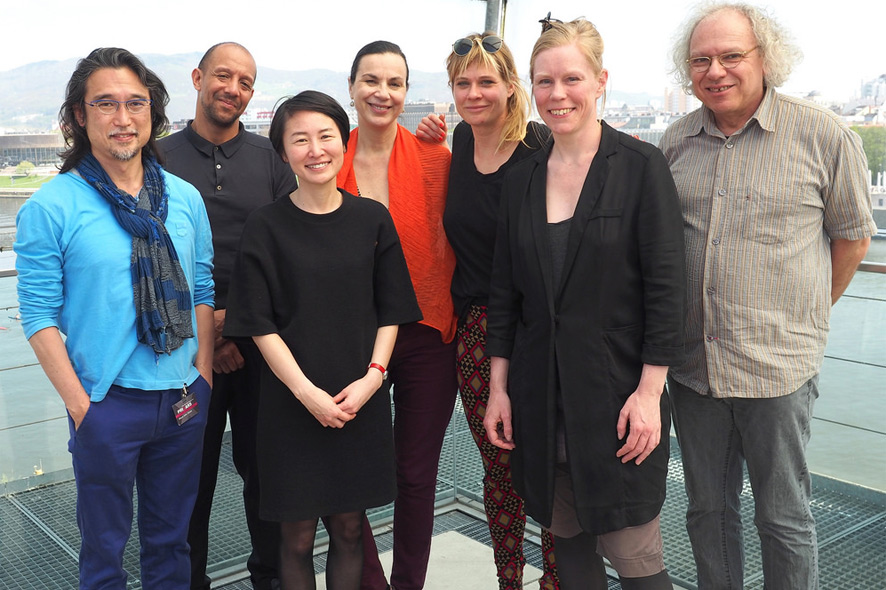
The 2017 STARTS Prize Jury (from left to right): Shuzo John Shiota (Polygon Pictures), Bradly Dunn Klerks (General Director Iris van Herpen), Chiaki Hayashi (Japan Lisaison MIT Media Lab), Victoria Vesna (UCLA), Sophie Lamparter (swissnex San Francisco), Rikke Frisk (Indigeb), Alexander Mankowsky (Daimler). Credit: Ars Electronica / Martin Hieslmair
„Through the two main prizes and all the Honorary Mentions, we have a tool to highlight artistic contributions and outstanding examples of mutually beneficial collaborations between artists, researchers, and technologists; projects that allow technology and research to cross over the divisive borders of their disciplines. We awarded and recognized projects that prove the importance of interdisciplinary and diverse collaboration, and offer not just inspiration but adoptable models for institutions, organizations, and individuals to follow“, according to the introductory statement by the jury, the full text of which is available online at starts-prize.aec.at. But now to the 2017 prizewinners:

Credit: MIRAI records, foto: MIRAI seisaku
Grand Prize – Artistic Exploration: l’m Humanity by Etsuko Yakushimaru
Jury Statement: Etsuko Yakushimaru is an example of a new generation of young artists who seamlessly traverse the worlds of fine art, pop culture, performance, science, and technology. Her creative expression includes drawing, installation art, media art, poetry and recitation, including doing vocals and illustrations for a rock band formed in 2006Soutaiseiriron (Theory of Relativity). She is also a primary member of electronic pop unit Tutu Helvetica, and collaborates with a number of highly regarded musicians.
„I’m Humanity“, is a song by Yakushimaru with which she imagines new ways that music could be transmitted, recorded, mutated, and diffused. Here we have pop music composed with the use of the nucleic acid sequence of Synechococcus, a type of cyanobacteria that has long existed in Ibaraki Prefecture. The artist envisions that even if humanity goes extinct in the future, the species that replace humanity will eventually decode the music in the microorganism through translation methods that go far beyond what we can even imagine.
Professor Satoshi Hanada at the Tokyo Metropolitan University opened his lab to enable the process by cultivating genetically modified microorganisms. The genetic codes (276 nucleotides) were artificially synthesized by a DNA synthesizer and inserted in a vector, designated pSyn_1. The inserted DNA fragment encoded music chords were then introduced to a genome of a host cell (cyanobacterium, Synechococcus elongatus PCC 7942) by homologous recombination. Thus the music chords in the Synechococcus genome can be infinitely reproduced along with cell division and are continually passed on from us to the post-human with occasional mutation.
Since recent developments in biotechnology, artists have been fascinated with genetic modification and we have seen multiple examples of work that utilize algae in petri dishes or work with genetic modification in some form. Indeed, an entire field of BioArt has emerged and the jury understands that even if encoding music with a DNA sequence has been experimented with by artists such as the band OK Go working with biochemist Dr. Sri Kosuri or Charlotte Jarvis working with scientist Sr. Nick Goldman, Yakushimaru makes an important breakthrough by introducing this technique to a large pop audience. Further, she made a concerted effort to work with scientists in major institutions such as the National Institute of Technology and Evaluation (NITE) and Tokyo Metropolitan University.
Thus, the idea of working with genes as a medium is taken beyond the DIY labs and the fringes of experimental audiences into established institutions of pop culture and scientific institutions. This is a testament to the ability of a singular artist to create bridges, to cross disciplinary boundaries and to enable new ways of perceiving the influence of scientific research on daily life. It is the hope of the jury that by bringing this idea to large audiences, the emerging field of bioart will gain more acceptance and more artists and scientists will collaborate on visionary projects that may take unusual paths and thus potentially bring groundbreaking innovations in both arts and the sciences.
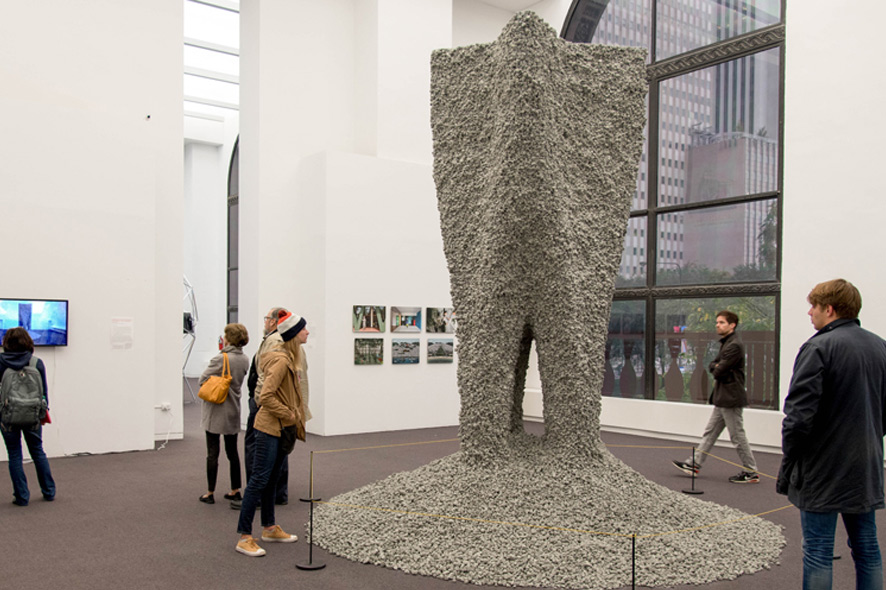
Credit: Gramazio Kohler Research
Grand Prize – Innovative Collaboration: Rock Print by Gramazio Kohler Research, ETH Zürich hat, and Self-Assembly Lab, MIT
Jury Statement: Rock Print performs a full-scale 3D “rock printing process” using self-aggregating capacities of the material itself. This visionary research project is a collaboration of Gramazio Kohler Research, ETH Zurich and the Self-Assembly Lab, MIT.
The jury was impressed with the way the collaborators utilized innovative combinations of robotics, 3D printing, and self-assembly to experiment and develop new ways of approaching architectural construction. Their technique is extremely elegant and minimal in form and concept, and it is demonstrated in situ to audiences in public spaces and in their lab. By using granular materials and string, they utilize the physical phenomenon of jamming and demonstrate on a large scale the concept of self-organization that is found in natural systems. They focus on additive digital fabrication techniques used for building non-standardized architectural components, with the aim to develop criteria for a new system of structural logic that can be applied to architecture.
Rock Print is built from low-grade granular material and constructed by robotic machines, bringing forward a new category of random packed, potentially fully reusable, poly-dispersed jammed structures that can be automatically fabricated into non-standard shapes. We witness in action full material reversibility and reusability of the aggregated materials; structurally active interlocking, differentiated structural performance that have geometric flexibility and articulation. The piece that was presented could easily be seen as a sculpture, but when we look more deeply into the process, it becomes clear that the elegant shape offers much more to the field of architecture.
The collaborative group developed this project to investigate methods and techniques for design and robotic aggregation of low-grade building material into load-bearing architectural structures that are fully recyclable and re-configurable with high geometrical flexibility and minimal material waste. One could imagine reconfigured architectural structures that are assembled when needed and taken down into the original raw state, moved around and reconfigured to whatever shape the next location would require.
Widespread adoption of robotics is promising to transform the construction industry and building techniques, and will become increasingly automated both on- and off-site. This means change and even dispensing with manual laborwhich brings up many questions for the future of construction – both large-scale and small-scale. This project not only demonstrates the potential of future construction but also raises issues that are more easily addressed as we witness how functional and aesthetic qualities “inform” architecture through to the level of material.

Credit: Hadeer Omar
Honorary Mention: 3arabizi Keyboard by Hadeer Omar
Jury Statement: Although this work is still at the conceptual phase, the jury was impressed by its unique message that technology could empower diversity and ethnicity. Instead of pushing the global standard, it reminds us of the importance to observe how local people interact and design services that will allow for differences in each region, country, and culture. It would benefit many to further develop these kinds of ideas that promote respect and the recognition of diversity while opening up venues for new hybrid communication systems (to emerge).
Honorary Mention: Blink: Humanising Autonomy by Adam Bernstein, Raunaq Bose, Leslie Nooteboom, Maya Pindeus
Jury Statement: Autonomous cars, drones, and other moving things will enter the public spaces in the next decade. While the public is informed mostly about the engineering progress, the task of integrating these things into our (human) way of cooperating with each other is rarely addressed. With BLINK, four students are suggesting a communication device that encourages the development of a” Language for Autonomous Vehicles”. The proposed system would communicate the intent of the vehicle while allowing pedestrians to influence its decisions. The jury wanted to further encourage this fresh approach towards intuitive interaction with autonomous, mobile machinery.
![[IGNIS AER AQUA TERRA]](https://ars.electronica.art/aeblog/files/2017/07/ignis.jpg)
Credit: SHOJI FUJII
Honorary Mention: [IGNIS AER AQUA TERRA] by Yuima Nakazato
Jury Statement: The title of this long project by fashion designer Yuima Nakazato is from the names of the elements in Latin Fire, Air, Water and Earth. Here we see the vision of each individual wearing their clothes as an extension of their personality and physical attributes. The jury recognized the importance of the idea of having clothing created without being sewn but instead being formed from thousands of components or units. We see this trend in many areas of society and technological development, and to have it also reflected in individual expression is an important contribution to new ways of envisioning the fashion design industry.
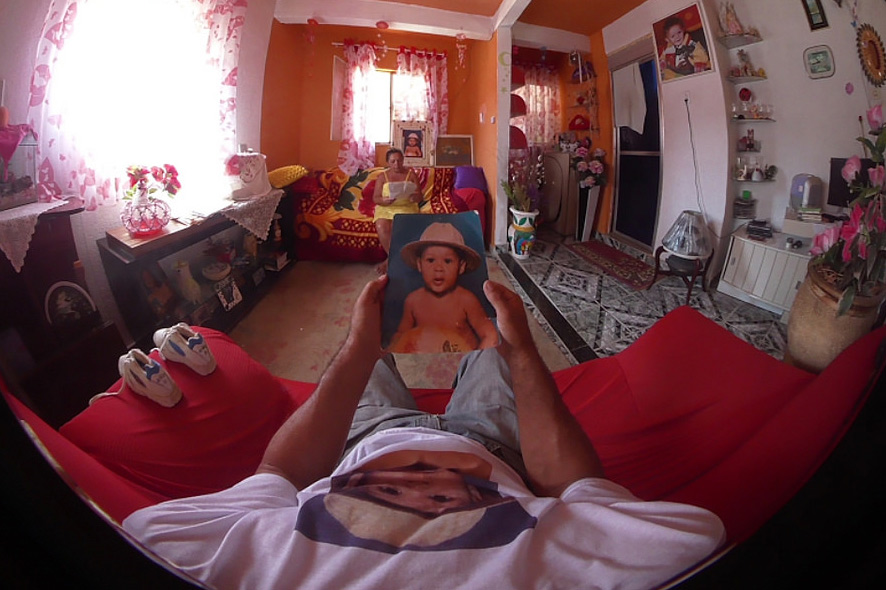
Credit: BeAnotherLab
Honorary Mention: Library of Ourselves by BeAnotherLab
Jury Statement: The jury felt that BeAnotherLab team is successfully utilizing virtual reality technology as a true empathy machineby placing you in another person’s body and making you see the world through their eyes. While changing gender, age, race, or origin we potentially change somebody’s perspective and view on the ‘others’ and on themselves. These experiments, artistically driven, and in close collaboration with several universities, investigate the feeling of embodiment and empathy and are impacting research areas in perception, psychology, neuroscience, and social relations.
Honorary Mention: Mimus: Coming face-to-face with our companion species by Madeline Gannon
Jury Statement: Autodesk has taken the lead in how industries could collaborate with artists and designers. While the latest technologies like AI and robots tend to be managed highly confidentially, the jury agrees that it is very important for tech companies to design open collaboration by hosting residential programs and learning from anti-disciplinary groups for innovation.
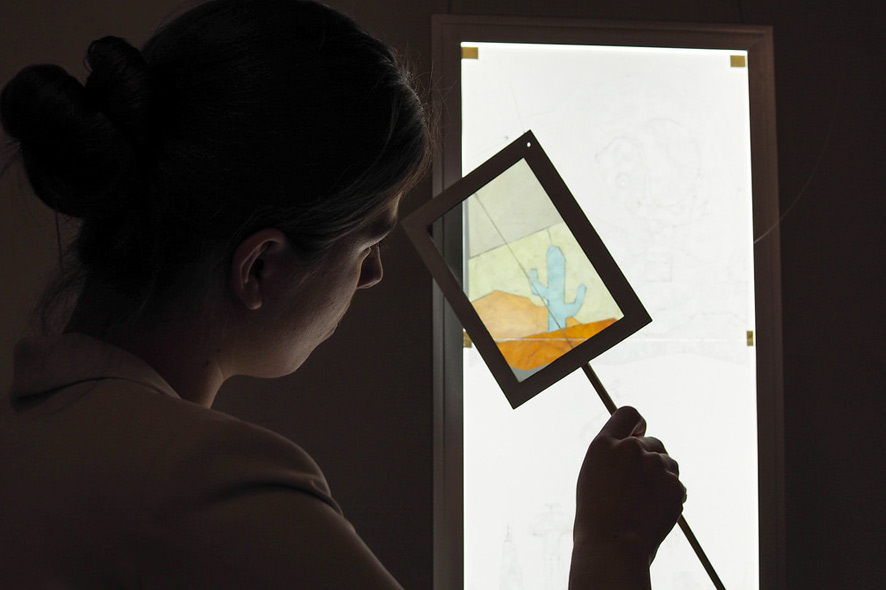
Credit: Ars Electronica / Martin Hieslmair
Honorary Mention: nonvisual-art by Lisa Buttinger
Jury Statement: One can never know from where the next groundbreaking idea comes. What will start the next wave of artistic expression? And what else might this lead to? nonvisual-art was passed over to the STARTS prize jury from the u19 category and it was immediately agreed that this project deserves an Honorary Mention. It is strong in its curious investigation while at the same time it is controlled and very open to its “handmade” expression. Not only did Lisa create enchanted images, she also invented her own new media with everyday materials. She used her knowledge of natural science and turned it into an artistic tool where new, beautiful, almost magic images appear. This project is a really good example of how artistic exploration can lead to new expressions, new innovative tools brought to us by a very young artist who has received the right support to enable her to follow and develop her artistic skills and curiosity.
Honorary Mention: Out of Exile by Nonny de la Peña, Emblematic Group
Jury Statement: Nonny del la Peña is known by many as the ‘Godmother of VR’. Committed to new ways of storytelling and immersive journalism, she experimented with virtual reality at the UCLA Creative Technology Lab long before the current hype. Her approach has inspired the first Oculus prototype, as well as many other technology companies, media outlets, and journalists. The jury agreed that she has the ability to use the power of virtual reality in a unique way to transport people inside stories and situations to create empathy and raise awareness for real world problems.
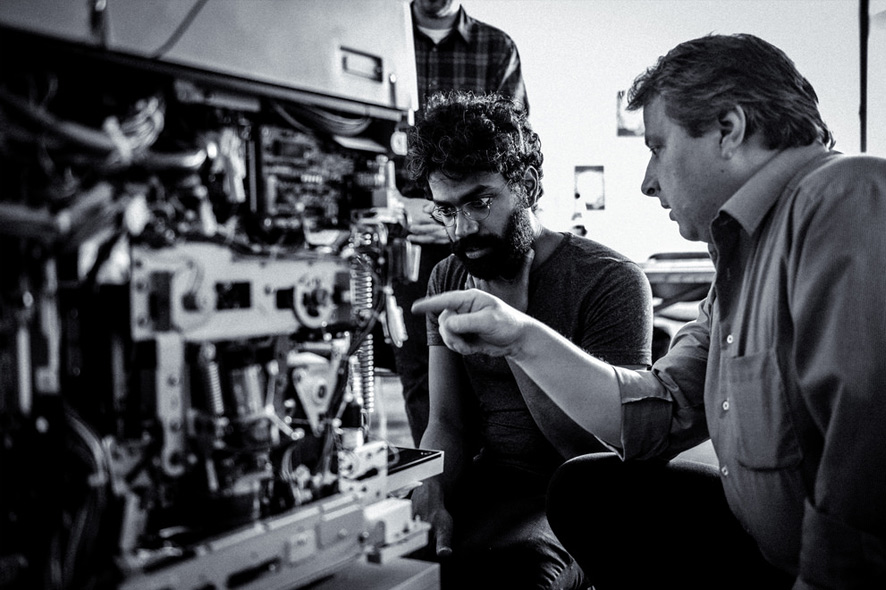
Credit: RIAT CC-BY
Honorary Mention: RIAT – Research Institute for Arts and Technology by Research Institute for Arts and Technology
Jury Statement: The RIAT – Research Institute for Arts & Technology based in Vienna acts as a platform for counter movement by creating space outside of academia and the established gallery system. The RIAT activists do not hesitate to tackle the most difficult and disturbing problems of our contemporary society such as creating crypto-currencies to change the course of our world. Moreover, they have initiated the Journal for Research Cultures to communicate their thoughts and experiences to the global community of academics and beyond. Artistic Bokeh at the Museumsquartier in Vienna and the Coded Cultures festival for fringe research and experimental arts are further activities. RIAT shows successfully how the reference to “Art” can provide an umbrella for unconventional and even revolutionary thinking.

Credit: ©PBAI
Honorary Mention: Sentient Veil by Philip Beesley
Jury Statement: Philip Beesley has succeeded in composing layers of cellular textiles, a multitude of LED lights, and glass vessels containing chemical photocells glimmering in color, into generic beauty. Looking at this work, one imagines the experience as being akin to walking into an ancient dreamy forest, and like such forest, it recognizes you, hissing, breathing, and groaning. The jury appreciated this work for its combination of intricate technology and strong yet elegant aesthetics; a thought provoking installation that invites us to ponder about our most elemental state of being.
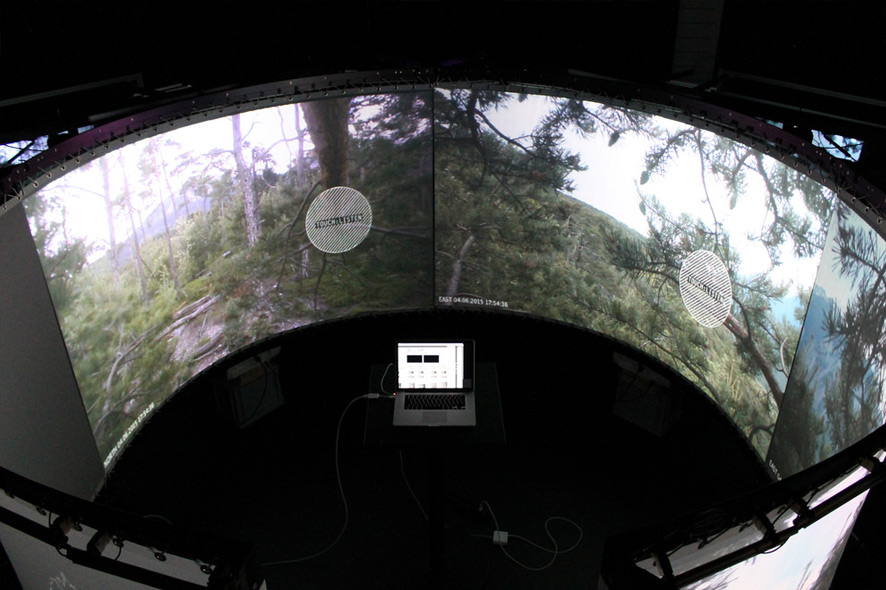
Credit: Marcus Maeder
Honorary Mention: Treelab by Marcus Maeder, Roman Zweifel
Jury Statement: The jury was impressed with the unusual pairing of a forest expert and a researcher in computer music and sound technology that is bringing the so far unheard ‘sounds of trees’ to the surface. By needling tiny microphones beneath the bark of trees, much is revealed about their physiological processes, and about the forest ecosystem in general. Their collaboration resulted in a joint research project on complex environmental data collection and sonification. The sound models serve as a tool to analyze patterns, understand links, and unlock new research areas for both artists and scientists alike. But through a beautiful installation it also helps the general public to experience and gain deeper insight.
Additional info about the two prizewinning projects, the Honorary Mention recipients, and other nominees is online at starts-prize.aec.at!
This project has received funding from the European Union’s Horizon 2020 research and innovation programme under grant agreement No 732019. This publication (communication) reflects the views only of the author, and the European Commission cannot be held responsible for any use which may be made of the information contained therein.
